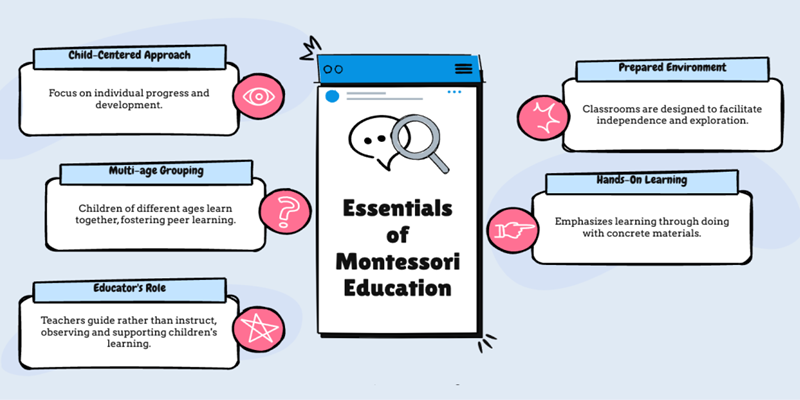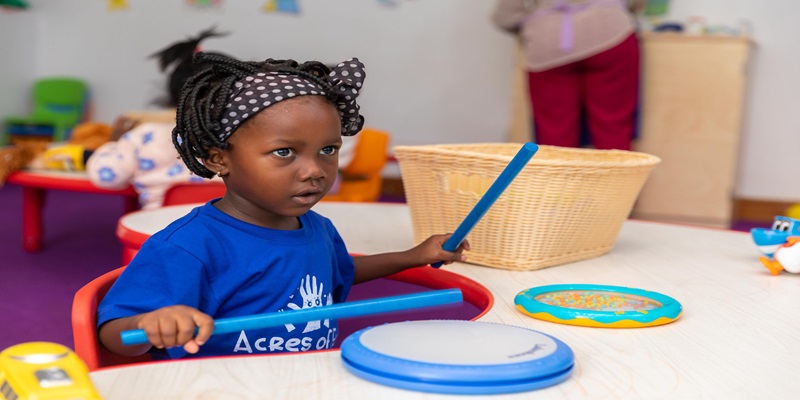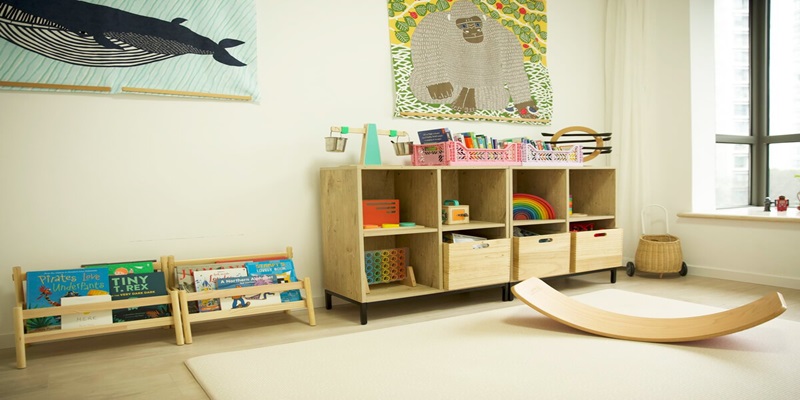Mother & baby
Montessori Approach for Toddler Development - A Parent's Guide
As a toddler parent, you always look for ways to help your child develop and improve. The Montessori method offers an excellent opportunity to visibly enhance your little one’s development.
As a toddler parent, you always look for ways to help your child develop and improve. The Montessori method offers an excellent opportunity to visibly enhance your little one’s development. Applying the philosophy in this prepared environment provides your toddler with an opportunity for exploration, discovery, and fostering independence. Understand the main principles of the Montessori approach to teaching, and you will be able to plan all activities and prepare space matched with a child’s inborn curiosity.
Understanding the Montessori Approach to Toddlers
Montessori for toddlers means the approach to education aimed at making a child independent, creative, and self-motivated in acquiring knowledge. Developed by Dr. Maria Montessori, she came to believe that young children have an intense urge to learn and get themselves acquainted with the world around them.
Key Principles
• Generally speaking, the Montessori approach focuses on:
• Respect for the child’s natural development
• Prepared environments that foster exploration
• Mixed-age classrooms promote peer learning.
• Freedom with limits of choice
• Hands-on learning experiences
The Prepared Environment
The Prepared Environment is one more critical attribute of the Montessori teaching method. This environment for toddlers consists of the following:
• Child-size furniture and tools
• Low-set shelves with their contents easily accessible
• Activities to encourage fine and gross motor skills
• Areas for practical life skills, sensorial experiences, and language development
The Role of the Adult
Adults in Montessori schools act more as guides rather than lecturing teachers. They observe the tendencies and aptitudes of children and introduce new materials when needed. This process plants the seed for self-motivation and the love of learning from a young age.
The Important Montessori Principles for Toddler Development

Child-Led Learning
Montessori emphasizes letting the toddler take the lead in his learning. The technique acknowledges the natural tendency of all children to investigate and learn from their surroundings. Parents can give their toddlers different well-organized materials, based on their age, designed to inspire them to satisfy their curiosity independently and grow in independence.
Prepared Environment
Preparing the proper environment is central to Montessori education. To ensure good development in a toddler, an adult has to provide low shelving with activities that will trigger the child’s curiosity and encourage them to engage themselves without much guidance from an adult. This will not only develop independence but also introduce them to order. It has to be safe, enabling them to move and decide for themselves.
Hands-On Exploration
The Montessori principles showcase the value of concrete and sensory experiences in young children. Children are naturally curious by nature and desire to learn by actively participating in their environment. Let your child manipulate objects, experiment with cause and effect, and even use all his senses to experience the world around him. By giving your child a hands-on model to learn from, he will be able to give himself a solid foundational base that will see him progress into abstract thinking and problem-solving abilities later in his life.
Respect for the Child
The Montessori philosophy’s core values include absolute respect for the child as a dignified human being. This means that his feelings should be respected, his ideas listened to, and his efforts admired. Give your child choices within previously set boundaries, allow him the time it takes to complete a certain task without hurrying him along, and do not interrupt the child if he reaches a point of concentration.
Montessori-Inspired Activities to Try at Home

Activities stimulating the child’s senses: Fill various containers with rice, beans, or sand to let them feel the different textures. Prepare a color-matching game from items in the home. This will again promote their awareness of their environment and cognitive development.
Language and Literacy
Language development through interactive games: Create a cosy nook with a few books available. Create a picture card matching game with pictures of items your toddler identifies. Encourage storytelling with questions about their day by pointing at a photo or painting of their picture.
Math and Logic
Mathematical foundation through games: Use buttons or pebbles as counters; create simple, coloured object patterns for them to imitate. This will help them develop logical and problem-solving skills.
Art and Creativity
Opportunities for creative expression: Provide harmless, easily washable colouring materials such as crayons, finger paint, etc. Leaves or flowers from the natural environment can be used for collage works. Such an experience will give the child expression and fine motor skills while developing a sense of art appreciation.
Organizing a Montessori-Friendly Environment

Applying the basic principles of a Montessori classroom can create a space that will completely revamp your toddler’s learning and development. It is all about creating an environment where independence, exploration, and all-inclusive sensory experiences hold the reins.
Organize at Child-Height
Place furniture and materials in your toddler’s eye view. Display toys and learning materials on low-lying shelves for easy accessibility. Hooks for coats and bags should be within reach to develop self-reliance in everyday tasks.
Choose Natural Materials
When purchasing toys and tools, select materials made from wood, fabric, or metal instead of plastic. These provide excellent sensory experiences and connect children to nature. Consider adding a few plants or even a small indoor garden to grow your toddler’s sense of responsibility and love for nature.
Create Order and Beauty
Keep the space uncluttered, with space for different activities. Use baskets or trays to organize materials, and make accessible ways for your toddler to select an activity and put it back. Add beautiful artwork at your child’s eye level to develop an appreciation for beauty.
Provide Real-Life Tools
Include child-sized versions of everyday items, such as brooms, dustpans, and kitchen utensils. This will further support practical life skills and build confidence in the toddler. Make sure that the tools/utensils used are safe for the toddler and suitable for his/her age and ability.
Transitioning Your Toddler to Montessori Lifestyle
Transitioning your toddler into a Montessori way of life first involves creating a prepared environment at home. Preparing the environment provides space that will encourage independence and exploration. The first steps include lowering the shelves and putting out toys/other materials within the child’s view. Use open baskets or trays to display an activity that can be done quickly. Please ensure the furniture is child-sized so your toddler can sit, work, and play comfortably in it.
Enjoy the journey, applaud those little successes, and watch your child bloom. The skills and confidence your toddler get from Montessori principles will serve them beyond these tender years.
How do you like this article?





 Latest Posts
Latest Posts





